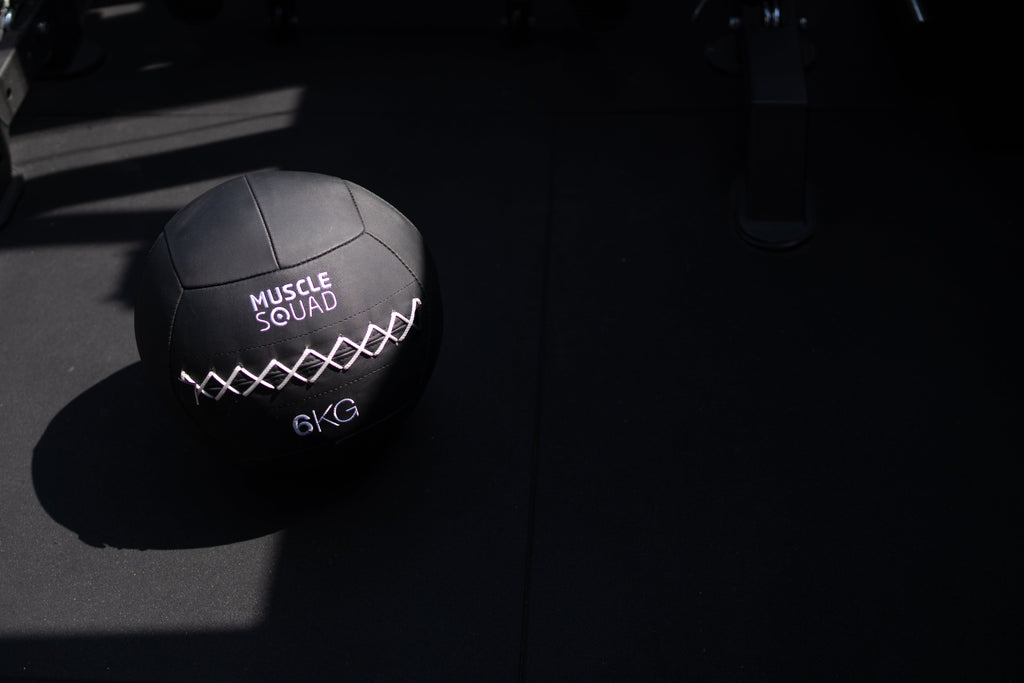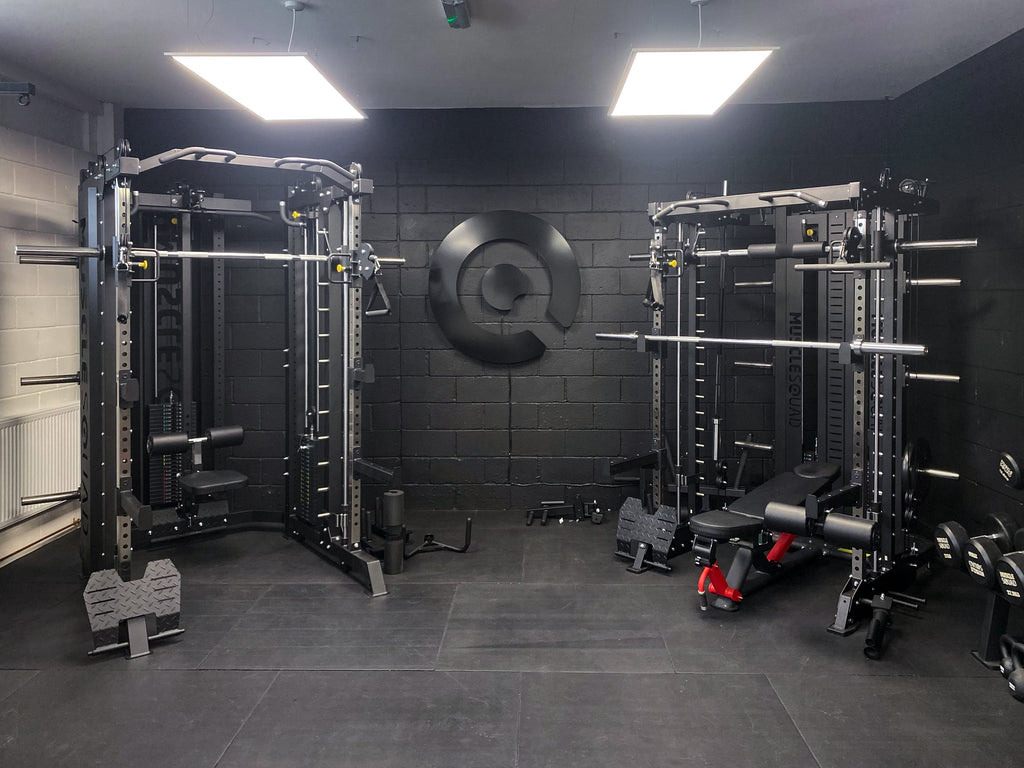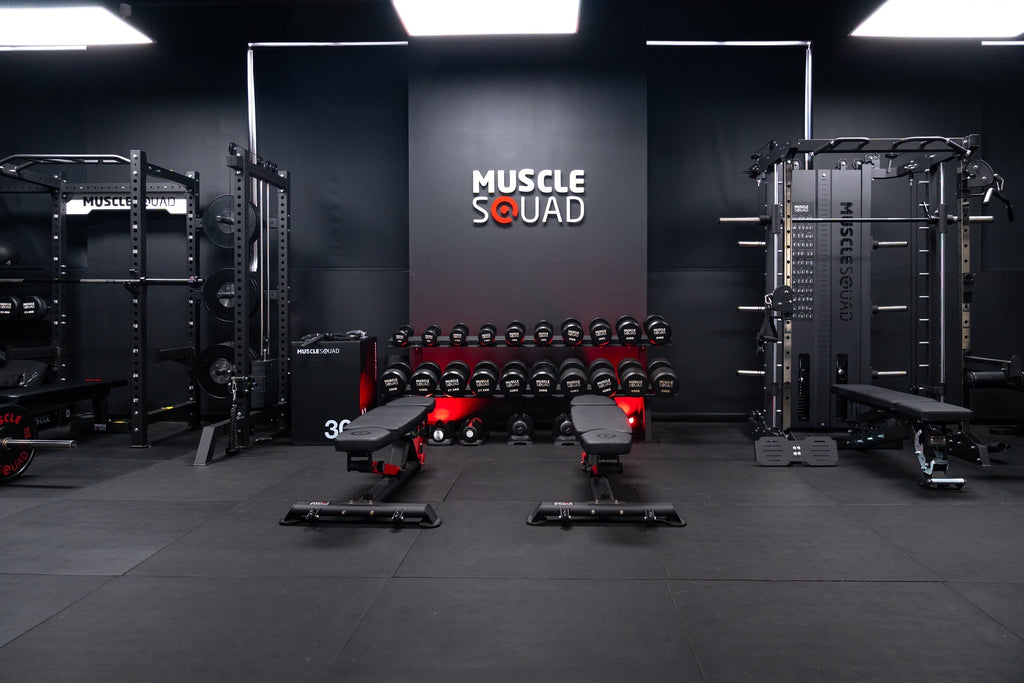If you’re looking to have the perfect home gym, then a squat rack is essential. However, there are plenty of options to choose from when it comes to deciding which squat rack you actually want to purchase!
There's the folding squat rack, which is designed to help you better utilise valuable floor space; the fixed squat rack, which is perfect for anyone looking for a pick-up-and-go solution; or the squat rack with cables which allows for a wider range of workouts.
Deciding which squat rack is best for you is going to depend on your workout needs as well as your space limitations. We've compiled a list of squat racks that offer their main selling points so that you can decide on the perfect squat rack for your gym.
What Are the Benefits of a Folding Squat Rack?
The folding squat rack is intended to help you use your floor space more efficiently. Since it can fold down neatly, you can use it to free up floor space to perform deadlifts or set up a bench press. In addition, if you are particularly constrained when it comes to room, a folding squat rack will allow you to complete the workouts you require without having to worry about tripping over other equipment or knocking into your rack. A foldable squat rack even has a more stable platform than its quarter rack and squat stand counterparts!
We recommend the folding squat rack for anyone who's looking to work out in a single garage space because it can be easy to fit anywhere with its compact design. We offer a wall-mounted folding squat rack, as well as a folding squat rack with cables so that you can choose the perfect rack for you depending on your workout needs. Both of our foldable squat rack designs allow you to lift inside the rack for added safety and security with spotter arms and safeties.

What are the Benefits of a Fixed Squat Rack?
Freestanding squat racks are perfect for anyone dealing with enough space in their gym to comfortably fit them and provide a simpler experience than a foldable rack. Since they are ready to go with no need to fold away, they have much fewer moving parts than their folding counterparts. With a fixed squat rack, you also have the option of using add-on parts and attachments, as well as the ability to expand your rack with different accessories and components.
Our Phase 3 range of fixed squat racks is modular, allowing you to grow and expand your squat rack with a host of storage attachments for dumbbells and weight plates. You can also add plenty of workout attachments such as dip stations, pull-up bars and land mine attachments. In addition, since you can move this squat rack around, you can expand and move it within your own time.
We recommend the fixed squat rack for anyone who has a larger space to work with since it will provide added benefits in the long run compared to the folding squat rack. Since you can expand them, you can be assured that you'll get more longevity and use out of this squat rack, but it will come at the cost of space in your gym.

Squat Racks with Cables
If you're searching for a method to add some more functionality to your fixed or foldable squat rack, cables are a great way to do it. They offer the opportunity for a host of accessory work with your compound lifts, such as tricep push downs, lateral raises and various rows. A cable-equipped squat rack gives you all the essentials in one.
Our Phase 2 cable machines are set up on a 1:1 ratio. This means that the weight you choose on the stack is the weight you feel on the cable. You have two options here: the plate-loaded Quarter Rack or Freestanding Folding Rack, which have a trolley at the back to stack weight plates on, or the pin-loaded Quarter Rack or Freestanding Folding Rack, which have a more familiar setup of a weight stack that you can adjust at the pull of a pin.
The Phase 3 modular squat racks are set on a 2:1 ratio, which means that the weight at the cable is halved but the movement is smoother. For instance, a 5kg weight plate will only weigh 2.5kg at the pulley, making jumps more manageable for exercises like curls and extensions. Furthermore, a 2:1 ratio has an extended cable travel compared to a 1:1 machine. You can pull the cable farther away from the rack, making it ideal for chest and rear delt flys.
Our best-selling Multi-Functional Trainer is set on a 1:1 ratio and comes with 2 x 72kg weight stacks, so it's great for anyone looking to lift heavy on exercises like lat pull downs and low rows using the accessories provided.

Pros + Cons Summary
- Folding squat racks are perfect for smaller spaces, but this comes at the cost of some functionality. For larger areas, a fixed squat rack is more suitable.
- While a set-up without cables will give you plenty of versatility, cables are the way forward for anyone looking to do accessory exercises like tricep push downs, bicep curls and lat pull downs.
- Anyone looking to expand their set-up in the future should opt for a Phase 3 or Phase 4 rack since you can easily move it around and build a modular system around it.
How Much Should I Spend?
To determine what you should be spending on your squat rack, you should first consider which exercises you intend to do and see which rack will help you achieve those goals. For example, if you're looking for a simple piece of kit to bench and squat, a quarter rack or power rack will do nicely. You’ll be spending between £600-800 here.
If you want to add cables to your workouts, then the Phase 2 range is ideal. Our Phase 2 Freestanding Folding Rack is a popular choice, and comes in a plate-loaded or pin-loaded version. This will cost you between £900-1,500.
For full versatility, the Phase 3 range is the way to go. It’s modular and punches way above its price tag. You can start building a Phase 3 setup for as little as £600.
If you want gym-level quality in your space, then look no further than the Phase 4 range. Our commercially-graded racks have massive load ratings and are trusted by personal training studios and even Premier League teams and players. Shopping in the Phase 4 range will cost £3,500+.
Which Phase Is Right For Me?
Generally we recommend our Phase 2 range to anyone who's looking for a no-nonsense squat rack that doesn't break the bank. You'll still be able to lift heavy, with load ratings going up to 286kg, and there's a whole host of attachments that allow you to make the rack your own. For the best of both worlds, consider our pin-loaded Phase 2 racks to add a cable pulley to your setup.
Phase 3 thrives from its modularity. If you have a larger gym space and plan to add to it in the future, then a Phase 3 Rack is a smart choice as you’ll be able to expand on it with storage racks, cable stacks and even additional power racks if you wish. It’s like Lego for adults!
When only the best will do, look to our Phase 4 range. Each rack here is commercially-graded and modular, letting you build out high-performance PT pods and anything else you can dream up. They can also be used in custom rigs and racks — perfect if you have a clear idea of what you want and are just looking for the equipment to make it happen. With a string of add-on accessories too, you won't be left wanting for workout ideas.
Whichever choice you go for, we’re certain you’ll be chuffed with your purchase like the 5,000+ customers who've rated us 5* on Trustpilot!
Happy lifting and reach out to our team if we can provide any extra info about our racks.

 Aug 09, 2022 - Chris Billingham
Aug 09, 2022 - Chris Billingham


Leave a comment: